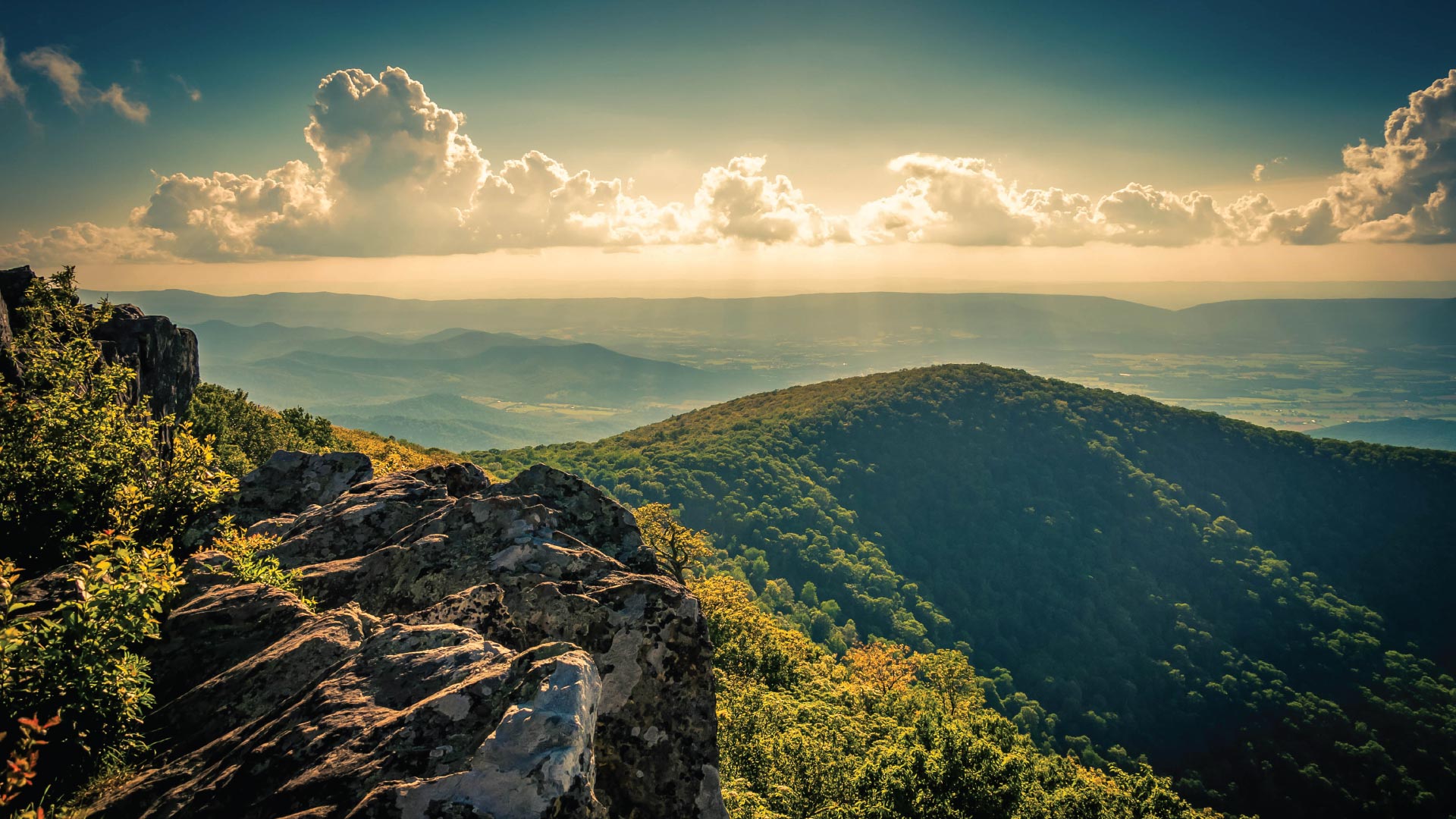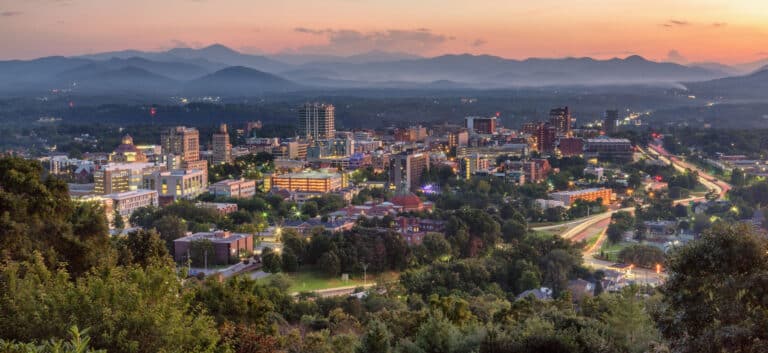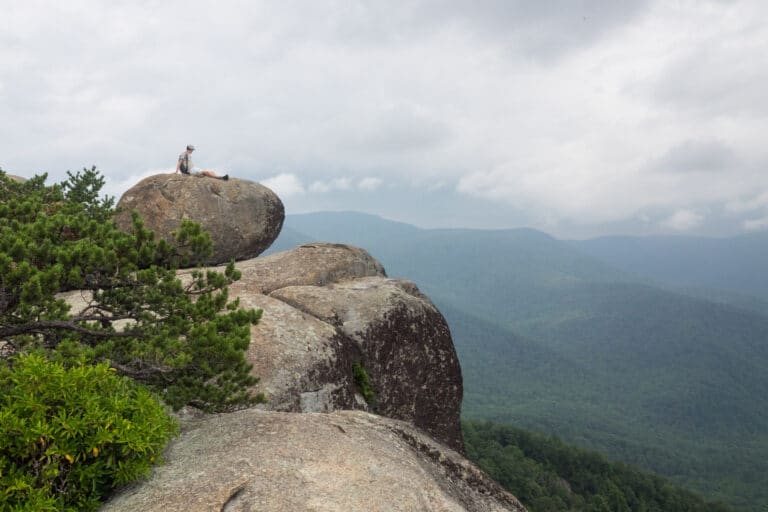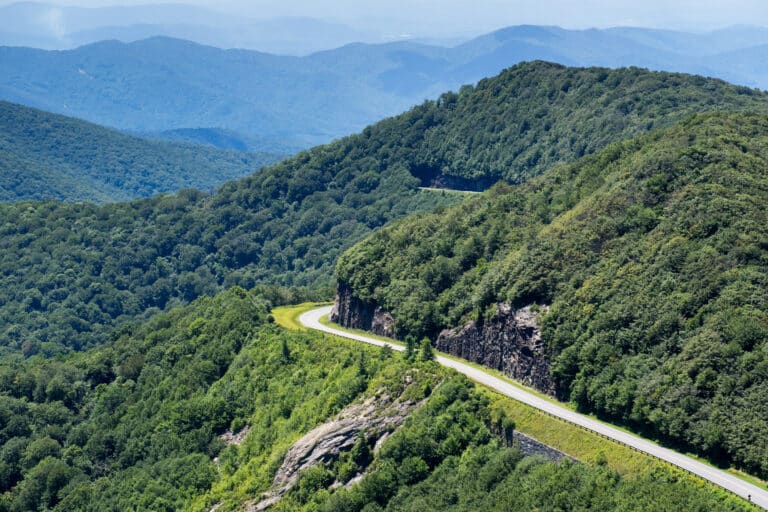The sun is shining, the temperature is perfect, and the stars are lining up for an action-packed day of adventure out in the woods.
But as you pull into the trailhead parking lot, you see it: The vehicle bearing an assortment of bumper stickers that push your buttons in all the wrong ways. Oh, no. You’ve argued a million times with people like this on Facebook, and it never ends well. So what happens now? Are you going to cross paths out on the trail?
This is a moment that many of us have experienced in some way, at a trailhead or in town. The little computers we carry everywhere have reshaped our perception of the world. In social media discussions, conversations tend to tilt to the extreme ends of the spectrum, and it’s easy to project that dichotomy onto the world.
Politics has increasingly become a team sport that overshadows every aspect of culture. Are you a Democrat or Republican? Urban or rural? Extractive or non-extractive user of the outdoors?
The polarization seems more severe than ever. However, these divides go back decades and even generations. In the early 1900s, during Teddy Roosevelt’s administration, a divide took shape between Gilford Pinchot, conservationist and founder of the U.S. Forest Service, and John Muir, preservationist and poet. That divide defined much of the 20th century: Are forests important for feeding sawmills or feeding our souls? Answer: Both and neither.
In the 21st century, that dichotomy has evolved. Timber interests still exist, but they now share an extractive interest in public lands with oil and gas. Pipelines are cutting gashes across national forests to move natural gas from wells to market. The Sagebrush movement wants the federal government to hand off its land holdings to states and private interests.
Even within the outdoor community, conflicts routinely erupt between various user groups. Beside the traditional divide between extractive users—mainly hunters and some anglers—and non-extractive users—most everyone else—we’ve seen narrower disputes, such as in the ongoing political fight over whether mountain bikers should be allowed to ride in federal wilderness areas.
And yet, the outdoors community really shares more in common than it realizes.
“There’s only one America,” said Audrey Peterman, president and co-founder of Earthwise Productions, Inc., an environmental consulting and publishing firm focused on connecting people with public lands. “The land doesn’t lie. The land is literally the firmament that we inhabit together. It bears the record of everyone and everything that has ever lived on this continent.”
That includes the Native Americans, who once inhabited every national park and forest. We often choose to forget that colonists drove Native Americans out of our most celebrated landscapes, including Yosemite, the Grand Canyon, and the Smokies.
More recently, the United States dictated who got to visit what land under what conditions for decades. The legacy of slavery, lynchings, and Jim Crow laws still overshadow the outdoors today.
When I first started mountain biking in the early 1990s, I often rode in Virginia’s Longdale Recreation Area, on the east end of my native Alleghany County. I had a vague knowledge of the site’s history from 1940 to 1963 as Green Pastures Recreation Area, a segregated spot intended for African Americans who were denied access to public wildlands elsewhere. My friends and I rode singletrack with reckless abandon—and with the privilege of white kids who didn’t have to wrestle with the recreation area’s history to enjoy it.
People of color don’t have that luxury, though. The historical barriers placed between them and the outdoors linger through oral histories that have preserved ancestral memory. Audrey Peterman tells a story that shows how that history manifests on public lands today.
“I’ve had the luxury of visiting 184 units of the National Park System from Alaska to the U.S. Virgin Islands,” Peterman said. She and her husband Frank decided to take a road trip around the country to know its natural wonders. “That journey marked a defining time in our lives, as we saw thousands of foreigners enjoying spectacular lands—and less than a handful of black or brown Americans.”
The Petermans work to empower people of color to explore public wildlands. Attending one of the Petermans’ recent lectures was Tamia Dame, an undergraduate student at the University of North Carolina at Asheville.
“As a woman of color with a love for Mother Earth, I, too, question the racial demographics I’ve observed in most outdoor spaces,” Dame wrote last month in Mountain Xpress. “My favorite outdoor activity is hiking the Appalachian Mountains, and similar to the Petermans, it’s rare for me to see another person of color along any given trail.”
Dame grew up near the Blue Ridge Parkway in Lenoir, North Carolina, but she told me it wasn’t until last year that she started to closely examine the relationship between African Americans and the outdoors.
“I feel like the outdoor culture is very cohesive, but it’s not necessarily inclusive,” Dame said. “I feel like most of the divide comes from the presumed idea of an outdoor enthusiast. If you go hiking, more than likely everybody you pass on the trail has a specific appearance. You know immediately they’re comfortable with and equipped to be outdoors. It sometimes makes me feel out of place. I can’t afford all the same supplies. I can’t imagine how it makes people feel who have even less than I do.”
“The outdoors is an important experience for everyone to have,” Dame continues. “It is an escape from the real world. The real world isn’t especially nice, and for the people whom the real world is most especially not nice to, it’s important for them to have a getaway and feel comfortable and feel like they have the right to be outdoors.”
Dame’s essay raised some people’s hackles. Acknowledging race and the cultural barriers that often go unnoticed in the outdoor community can be uncomfortable. And when white supremacists regularly book space in Tennessee state parks—as they regularly have over the last few years—the conversation is an important one.
Mention “division in the outdoors community” and many people think immediately of the conflict between extractive and non-extractive users. Through the first half of the 20th century, “outdoor recreation” was often used as shorthand for sportsmen, mainly hunters and fishermen. That has changed significantly as hiking, biking, paddling, climbing, running, and other non-extractive activities have grown rapidly while the number of hunting and fishing licenses has declined.
Many still fall back on the extractive/non-extractive split as the defining division of the outdoors. Longtime Roanoke Times outdoors writer Mark Taylor, who left the paper to work for Trout Unlimited a few years ago, dismisses it as overblown.
“Historically and traditionally, it’s been more of a perceived divide than a real divide,” Taylor said. “If we are out there enjoying the outdoors, no matter how we’re doing that, we have more in common than not. A guy whose number-one passion is hunting deer, if he is to boil down what his priorities are and why he enjoys the act of hunting deer, he’s going to get a lot of the same answers as the guy whose number-one priority is mountain biking.”
Taylor has always blurred the lines, enjoying hunting and fishing as well as trail running and biking. He notes that in the West, where he grew up, the distinction has become even more blurry, with hunters now frequently using mountain bikes to access backcountry destinations.
Experiences in the West also shaped the perceptions of James Revercomb, co-owner of Roanoke Mountain Adventures. He didn’t really hunt while growing up in western Virginia, but after heading west to guide Snake River whitewater trips at age 19, the allure of backcountry western hunts brought him into the culture.
Since returning to Roanoke to start his outfitting business in 2015, Revercomb said he’s met a lot of hunters, a lot of non-consumptive recreationalists, and a lot of people who do both.
Divides do sometimes arise, especially when talking about how public lands management is funded. Because license fees go back into public lands, hunters and anglers often feel as if they contribute to conservation in a more tangible way than other users who don’t pay into that system.
That’s still a fairly narrow difference, especially when measured against an increasingly powerful outdoor recreation industry that represents $373.7 billion, or 2 percent of the entire 2016 U.S. gross domestic product, according to a report by the federal Bureau of Economic Analysis. The outdoor industry now provides more jobs than the oil, coal, or natural gas industries.
“That in itself is common ground and a leg to stand on as we move forward,” Revercomb said. “Whether you’re a mountain biker or hunter or someone who likes to ride an ATV, you do that stuff because maybe you love being outside, and you probably love public lands. A lot of people who do this stuff want to preserve it for future generations.”
For outdoor enthusiasts, the bigger question might be how, exactly, to best use public land.
“The divide is less about what you do outdoors and more about how you view government and things like that,” Revercomb said. “There were plenty of hunting and angling folks who were super fired up and against the Bundys [the Utah ranching family who believes the federal government has no Constitutional authority to own land], and then there’s the more conservative-right crowd that hunts and fishes as well, and inherently thinks less government is better.”
That’s where politics comes in, as well as the urban/rural divide. Most outdoor recreation destinations such as national forests are located in rural areas. Most of the population in the Southeast and Mid-Atlantic is concentrated in metro areas. And through the 21st century so far, rural areas have voted increasingly more Republican and urban areas more Democratic, even as the parties move further away from one another.
Even in politics, however, the perception of division can sometimes diverge from reality. Social media tilts toward the loudest voices, who often represent more extreme ends of the political spectrum, but if you place people in a personal conversation they tend to be more polite and more likely than not to find some common ground.
Although Appalachia received scrutiny in national media for its support of Donald Trump in 2016, the region really was no more homogenous in its voting patterns than other parts of the country.
If there’s division in these mountains, it’s really no different than the rest of the country, says Elizabeth Catte, whose book What You Are Getting Wrong About Appalachia serves both as a rejoinder to J.D. Vance’s Hillbilly Elegy but also as a powerful reminder of Appalachia’s heterogeneity.
“I’m not sure if I see a culture war in Appalachia that is different or unique to the many types of other divisions and conflicts that are happening in the United States,” Catte wrote in an email. “For a variety of reasons, many people outside the region like to think of Appalachia as a monoculture, and that isn’t accurate. But it is often used to give credence to the theory that ideas and beliefs in Appalachia are universally shared and are therefore more enduring.”
“Individuals often want history that is compact and tidy,” she continued. “The work I do as a historian is often focused on complicating neat arguments about the past. This is particularly true of history that reflects themes of violence, racism, and exploitation. The past is what it is and not a fantasy of what we wish it might be.”
How do these historical divides—real or invented—affect politics and public policy? No one understands it better than Tania Lown-Hecht, communications director at the Outdoor Alliance, a Washington, D.C.-based advocacy group that represents human-powered outdoor recreation activities on Capitol Hill.
“The question we get more than any other is, do you support hunting and fishing?” said Lown-Hecht. “Our focus is not hunting and fishing, but we work closely with those groups. We have a ton in common policy-wise and don’t have a lot of conflict there.”
A sharper conflict arose in late 2017 when a congressional Republican filed a bill to open federal wilderness areas to mountain bikes. The bill seems to be locked up in committee, with little chance of passing both chambers in an election year, but it exacerbated tensions between mountain bikers and other recreationalists. The Outdoor Alliance is working with another bill to create a new designation that would protect wilderness areas while also providing more access for mountain bikers.
But in Lown-Hecht’s work, it’s still the rural/urban split that has the most implications.
“The divide between urban and rural populations is perhaps the greatest political divide in this country,” she said. “That maps onto public lands issues pretty strongly. So many of our public lands are in or adjacent to rural communities. The decisions around how to care for and what to do with public lands have a disproportionate impact on folks in rural communities. I think there’s often the sense that distant bureaucrats or elitists on the coasts are making decisions that affect your town and county and land.”
In recent decades, it’s been the outdoor community who has led efforts to protect public lands and wild places. It has safeguarded some of America’s most important landscapes, but some parts of rural America have resented or misunderstood these protections.
“People in rural communities adjacent to public lands love these lands,” continued Lown-Hecht. “They’re often why they’ve moved to or stayed in these places. We need to answer the question of how we care for public lands in the long run, and make sure there are economic opportunities distributed across the country. I think there are very legitimate grievances on both sides of that particular debate.”
Where can we find common ground? I asked that question over and over in reporting this story. And while different people have different ideas, a couple of solutions kept recurring. Get off the internet and get out of your comfort zone. Go outside. Listen to others and to the natural world. And make space for other people, especially those who have been historically marginalized.
As Audrey Peterman put it, the land doesn’t lie: “Public lands are the repository of our natural and cultural history, and the bonds of nationhood that we share together.”
Together.








